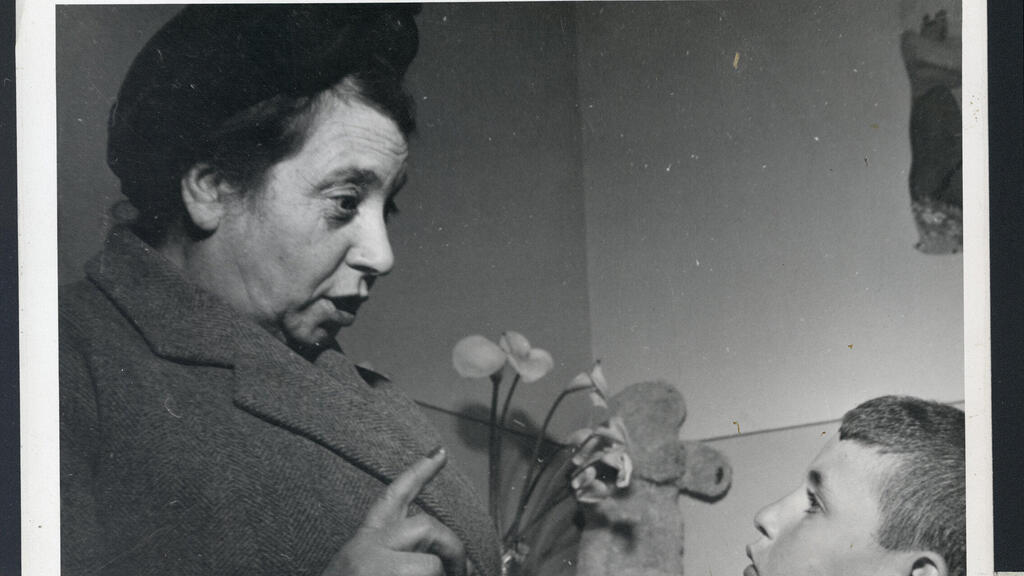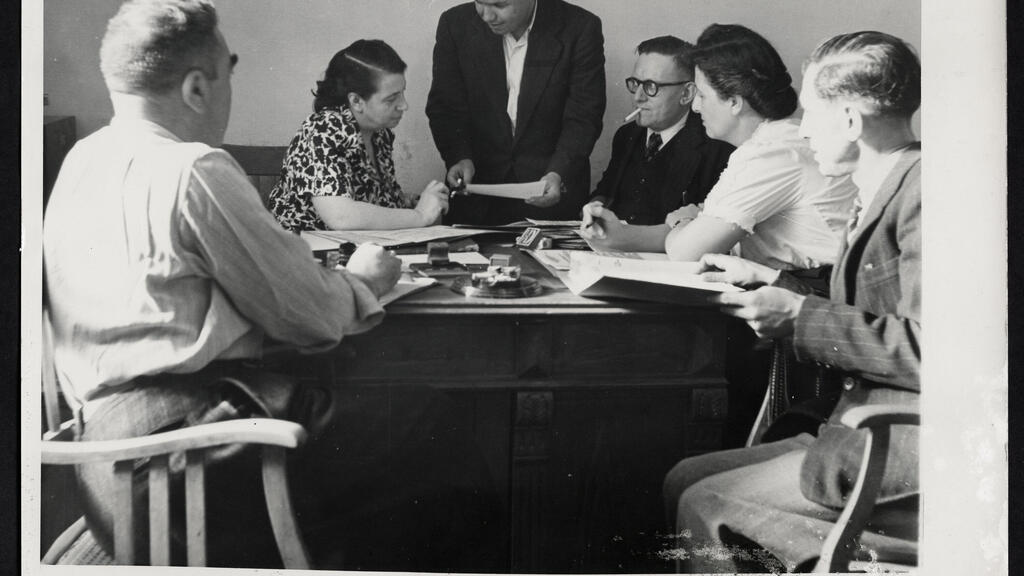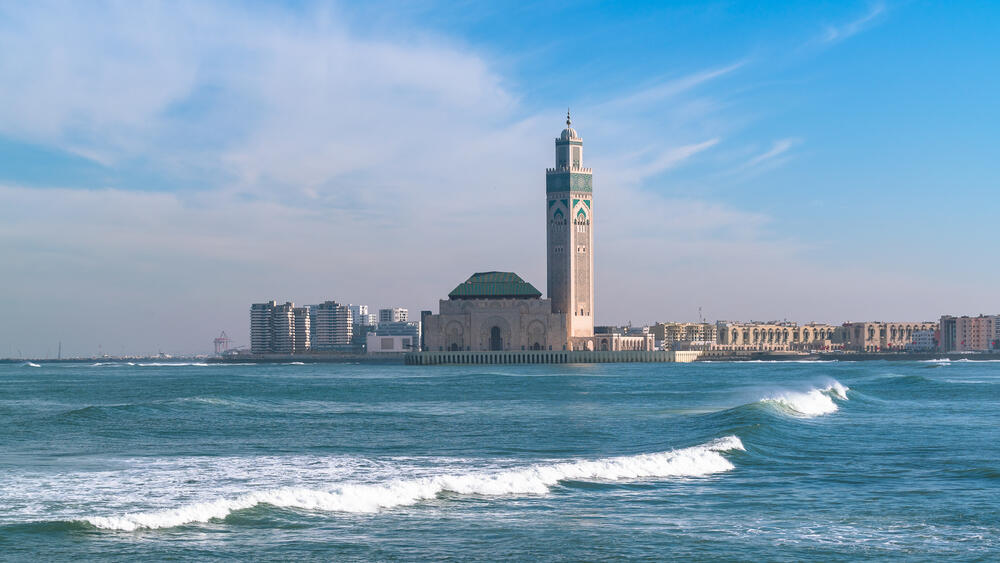Getting your Trinity Audio player ready...
Forty-four years have passed since the death of Hélène Cazès-Benatar, a Moroccan Jewish lawyer and social activist who saved thousands of refugees from Europe during World War II. Unlike many Jewish heroes her name is not widely known and, despite her tremendous efforts over the years to rescue refugees and assist many Jews, her story has not been sufficiently publicized given her long and rich work.
Read more:
Yafa Benaya , a research fellow at the Shalom Hartman Institute and lecturer at Ono Academic College, is currently trying to close this gap and explore the activities of this woman who was the first female lawyer in Morocco and broke through in many areas that were considered male-dominated at that time.
3 View gallery


Hélène Cazès-Benatar was the first female lawyer in Morocco
(Photo: Al Tylor, the Joint Archives)
What is your interest in Cazès-Benatar?
"My interest lies in women in Eastern Judaism, in exemplary figures that have been largely forgotten over the years and have not received proper recognition. I am currently writing a book about eight such women, with an emphasis on women writers. This is my mission in the world, to publicize these women both as a feminist project and regarding Jewish women in Islamic countries."
Why were Jewish women like these forgotten in the first place over the years?
"The history of the Jewish communities in Islamic countries has been less explored over the years, and it has been considered marginal for researchers. Nowadays, there are young researchers trying to close the gap, but historically they sought the narrative of 'persecuted to the revival of the nation in their homeland,' and researchers did not find that in Islamic countries. In addition, there was also a colonial perception of the inferiority of these countries and their Jewish inhabitants, and it was not considered interesting."
"Today there is some sort of amendment, which is still in its early stages, both in the education system, in the media and in informal frameworks, and of course in academia in Israel and around the world. Within this research gap lies the story of women, which is a universal story, where women have not received recognition and have been forgotten in history, especially Mizrahi women. Therefore, there is a need for correction within this correction."
Hélène Cazès-Benatar daughter of Amram Cazès and Miriam Nahon, was born in Tangier in 1898. In 1917, she moved with her family to Casablanca, where she studied at the Kol Israel Haverim"high school and was one of the first young Jewish women to receive a high school diploma. At the age of 22, she married Moses Benatar, a businessman and public activist and, unusual for the time, she maintained her maiden name. The couple had three children, but Cazès-Benatar was determined not to give up on her higher education and studied law at the University of Bordeaux in France. She resolved the tension between motherhood and education by studying mostly through correspondence until she obtained her law degree and became the first female lawyer in Morocco.
3 View gallery


Helen Cazes Benatar, second to left , studied law at the University of Bordeaux in France
(Photo: Al Tylor, the Joint Archives)
In 1939, her husband passed away, which had a profound impact on her. Nevertheless, she continued to work as a lawyer, raised her children, and simultaneously engaged in social activities for the benefit of Moroccan society and the Jewish community. She was a co-founder of the Casablanca Women's International Zionist Organization (WIZO) and served as its first president. She was also involved in Zionist organizations, worked for the welfare of the Jewish community in the Mellah Jewish community of Casablanca, and volunteered for the International Red Cross.
The refugees arrived at the shores of Casablanca
Cazès-Benatar's extraordinary activism began around 1940 when tens of thousands of refugees started arriving on the shores of Casablanca. According to her son, "One day in July 1940, while volunteering with the Red Cross on the shores of Casablanca, Cazès-Benatar received a letter from refugees who were stranded on a ship offshore. Hungry, thirsty and some of them sick, they pleaded at the gates, searching for refuge. Despite the authorities not allowing them to disembark from the ship, she heard the call and went. From that moment on, she dedicated herself entirely to the rescue mission of the refugees, a task that consumed her time and energy."
"She attended to every detail and ensured the refugees had everything they needed – food, clothing, medical care, finding work and a place to live. She transformed the Kol Israel Haverim hall in the city into a shelter for the refugees, rallying friends and community members to open their doors to them."
With all due respect to local assistance, the problem was that the Jewish community in Morocco was not in such good shape. What solution did she find for this?
"She quickly realized that the task was too great and that local and personal help would not be enough. It was necessary to make the leap into the organizational and political sphere, a realm that was predominantly male at the time, and establish an organizational and financial mechanism to sustain the rescue mission. She founded a committee for aid to foreign refugees' and led it with great skill. The committee served as the umbrella organization, dealing with everything related to the refugees and even gaining recognition from the local authorities. Beyond providing food, clothing, housing, medical care and more, the committee was able to raise funds, provide legal defense, and strengthen its power through collaborations with international Jewish organizations."
Cazès-Benatar also worked to release detainees from labor camps in the desert on the Morocco-Algeria border, where refugees who were allowed to disembark were imprisoned under harsh conditions. She worked to obtain immigration permits to the United States or South America for them, and she smuggled those who could escape to Martinique to prevent their transfer to internment camps. For those who remained in Morocco, she tried to integrate them into work to prevent their expulsion.
To strengthen her aid, Cazès-Benatar established a connection with the American Jewish Joint Distribution Committee (JDC) in New York, initiating a strong and long-lasting partnership. Within this framework, she was destined to become the JDC representative in Morocco and the Maghreb region, as well as the organization's legal advisor regarding refugees. As someone who belonged to the elite of Casablanca, she had numerous connections and established partnerships in formal and informal, political and civilian channels.
Where was her main power in creating these connections?
"As someone who embraced both Eastern and Western identities, she was able to mediate between different cultures and establish cross-continental connections. During World War II and its aftermath, when she was involved in the aliyah of Moroccan Jews to Israel, she was also active in the immigration of Jews from Syria and Lebanon."
According to estimations, how many refugees did she assist over the years?
"Cazès-Benatar was a one-woman rescue operation enterprise. Thanks to her, alongside other recruited activists, Morocco became a haven for refugees from Europe, mostly Jews. Due to her efforts, approximately 60,000 refugees were saved until their liberation in November 1942 when American forces landed on the shores of Morocco and Algeria in Operation Torch, freeing them from Vichy rule."
In 1943, she met President Franklin Roosevelt in Marrakesh, who expressed his appreciation for her life's work saving others. In 1953, she traveled to the United States for a three-month tour of lectures and fundraising for the benefit of the State of Israel. It was only in 1954 that she returned to her occupation as a lawyer. For many years, she divided her time between Casablanca and Paris, eventually settling in France in 1962, where she was also active in the Jewish community. She co-founded the Association of Moroccan Jews in Paris and served as its president. In December 1967, she visited Israel for the first and only time and was received with great honor. She died on July 7, 1979, at the age of 80, in her home in Paris.
From a historical perspective, where do you see her uniqueness?
"Cazès-Benatar broke new ground and shattered glass ceilings for many women of her time and those who followed. She expanded the education of women, broadened perspectives on women's work and career opportunities, and engaged in social activism and public service. All of this took place in a traditional society where public and political domains were predominantly male and closed off to women, and women's activism was limited to the neighborhood and community, focused on charity and welfare issues. She was among the pioneers and trailblazers who expanded the scope of women's activities into the public and political arena, serving as an example of a committed public servant who wholeheartedly embraced her mission.
"In a time when the concept of 'elite' was subject to mockery and expressions of hatred, Cazès-Benatar, coming from a high-status family, utilized her position and connections to bring goodness and light into the world. She represents the blessed societal influence that the sons and daughters of a serving elite can have. As her children wrote on her tombstone, she was 'a legendary woman who saved countless souls from danger.'"
Where did her motivation for such risky and extensive activism stem from?
"There is no doubt that her motivation was not personal. She closed her law office and became a one-woman rescue operation enterprise. I attribute this to the fact that she was a serving elite in the fullest sense of the word, and her privilege was to mobilize whenever she was needed. I see in this the Jewish values of mutual responsibility. In a certain sense, it chose her, and she, of course, chose it."



